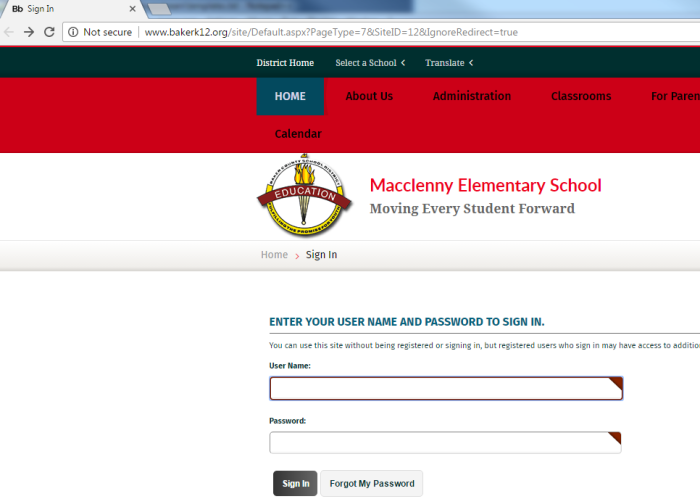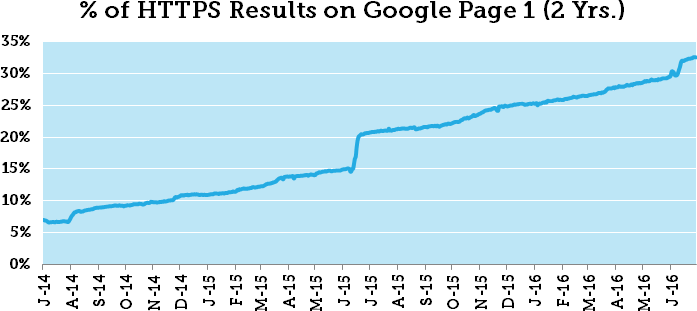
Over 50% of web pages loaded by Firefox are served through a secure connection. Google has been on a crusade against the non-encrypted web traffic for a good while now, and the number of domains using HTTPS has gone up sharply during the past 6 months. Let’s see how important this HTTPS beast is and what can it do for our websites.
Google announced HTTPS as a ranking signal back in 2014 and the SEO community has been abuzz ever since. Quite a few webmasters have migrated from HTTP to HTTPS and we even have a couple of case studies to prove that making your website more secure can also lead to a tangible SEO benefit.
To keep things short and sweet, HTTPS is a protocol intended for secure data transfer over the internet. It uses an encrypted connection provided by Transport Layer Security (TLS) protocol. Its predecessor Secure Sockets Layer (SSL) was developed by Netscape back in 1994 to facilitate secure payments. When a domain is protected by HTTPS, your visitors will see a green padlock icon in their browser address bar.
It wasn’t until 2010 when Google decided to put its whole search engine behind HTTPS that the practice of encrypting regular content pages really caught on. It coincided with an upsurge in snooper software activity. Anyone equipped with a snooper could monitor other people’s activity on the internet. That’s how passwords are stolen and how people fall victim to blackmail in certain political or business affairs.
That’s why Google and other big organisations have taken an initiative to get most of the World Wide Web behind HTTPS. Google has plotted out a few tactics to wage the war on non-encrypted websites.

Its Chrome 56 version warns (albeit in a humble sort of way) users when they’re about to enter login details over an insecure connection. Google has even resorted to naming and shaming top websites that are not using HTTPS.
So we have to review my first statement about 50% of web pages loaded by Firefox being delivered over HTTPS in context of the top 100 websites named by Google.
The thing is that the Top 100 list serves around 25% of all web pages worldwide. With that in mind, HTTPS is not as widespread as we think. But enough of that. All that webmasters really care about is – will it make a tangible difference to my SEO and traffic. And the answer is yes.
HTTPS as a ranking signal – does it help with SEO?
A recent case study published by Brian Dean of Backlinko sheds some more light on the current Google ranking factors. There is no surprise that sites with stronger backlink profiles and high-quality long-form content are enjoying higher ranking positions. Brian also found a strong correlation between HTTPS and first page rankings.

Another golden nugget of data is provided by MOZ and their famous 10,000 keyword tracker. They’ve been tracking HTTPS as a ranking signal for the last couple of years. Back in 2014 only 7% of page 1 Google search results had HTTPS protocol enabled. Fast forward to modern times and at the time of this SEO case study (July 2016) the proportion of HTTPS-enabled sites on page 1 has risen to 32.5%.
Although it is strong evidence, the main point is that a poorly built website with bad content and a questionable backlink profile won’t outrank their competitors only by enabling TLS.
Is setting up HTTPS difficult?
Not if you know what you’re doing. It used to be expensive and tedious back in the day. With the recent developments like “Let’s Encrypt” appearing on the scene with their free TLS certificates and many hosting companies offering clients a two-click TLS certificate installation, having your site secured has definitely become much more user-friendly.
The tricky bit is what you do after your website receives the shiny green padlock icon. If you just leave it as it is there’s a chance you might have created more SEO issues than you already had. This will mean that any potential ranking boost from the TLS certificate is quickly undone by the hoard of technical SEO issues you've just inflicted on your site.
All internal absolute urls will need to be adjusted manually. You need to make sure you redirect HTTP to HTTPS properly, change settings in your Analytics and Search Console profiles and this is just the tip of the iceberg.
One of the main issues people are having after migrating to HTTPS is related to content served by third-parties – JavaScript libraries, images and adverts. Unless all embedded 3rd party content is also served through HTTPS, your website will have a yellow mark next to the padlock icon in browser’s address bar alerting visitors that your website is not secure.
Some of the SEO issues caused by badly executed HTTPS migration can be picked up by our technical SEO audit tool. Give it a go:
Next steps for implementing https on your site
- Plan to update your site to run over https as soon as possible - even if your shopping cart pages are already running over https we recommend that you switch your whole site to run over https
- As well as your web developer, make sure you have a well qualified SEO involved in the planning and implementation of your switch over
- When you have your site running on https - conduct a thorough SEO audit and fix all the issues you find as a priority
- As long as you have done everything correctly - you should see a bit of an increase in organic traffic to your website - give yourself a pat on the back


